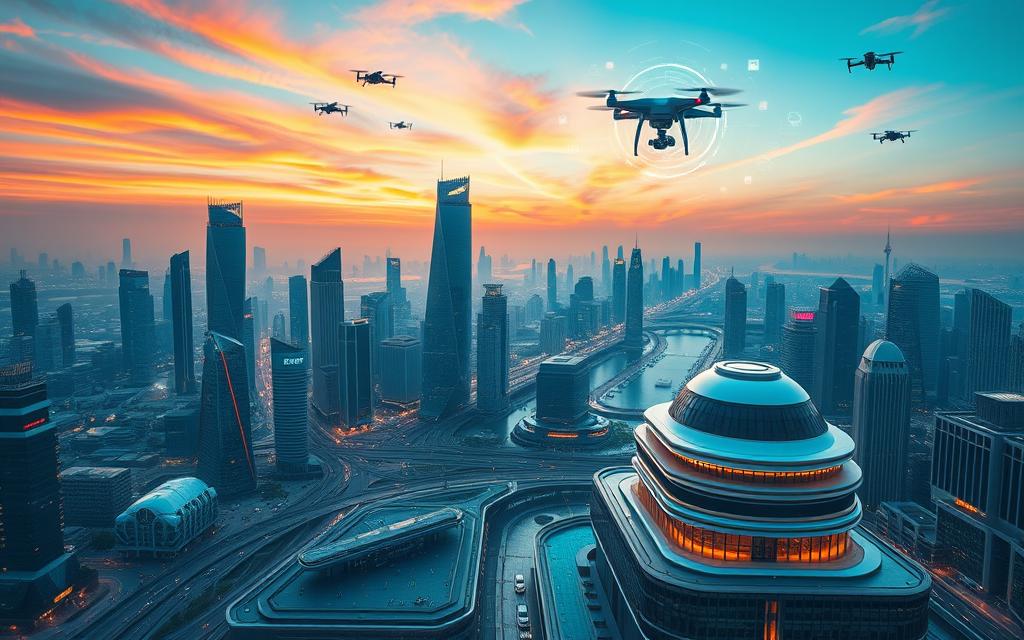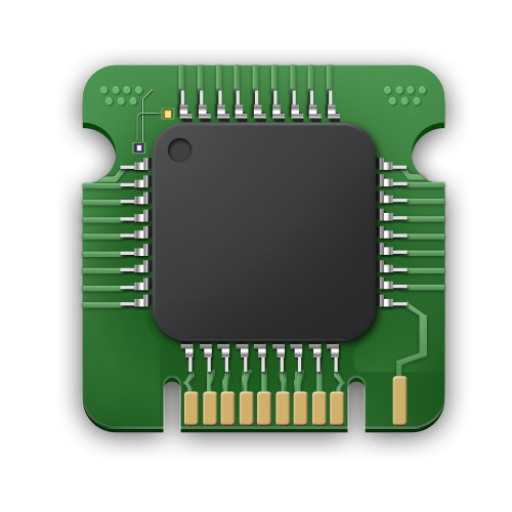The term “technology” is often associated with modern gadgets and digital systems, but its meaning extends far beyond these contemporary applications.
At its core, technology represents the systematic application of knowledge to achieve practical goals and solve real-world problems.
From prehistoric tools to modern innovations, the evolution of technology has transformed human capabilities and reshaped our world.
This article delves into the complex relationship between technology and society, examining both the benefits and challenges that come with technological advancements.
Defining Technology: More Than Just Gadgets
At its core, technology represents the application of knowledge to achieve practical goals in a reproducible manner.
As
“Technology is the application of conceptual knowledge to achieve practical goals, especially in a reproducible way.”
This definition highlights the essence of technology as more than just gadgets; it’s about applying scientific knowledge to solve real-world problems.
The Essence of Technology as Applied Knowledge
Technology is fundamentally about the practical application of scientific knowledge. It serves as a bridge between theoretical understanding and practical implementation, transforming complex scientific principles into useful products and processes. This application of knowledge is what enables us to achieve specific goals, whether it’s improving healthcare, enhancing communication, or increasing productivity.
Technology as Products and Processes
The term technology can refer to both the processes involved in applying knowledge and the products that result from these efforts. These products can be tangible, such as machines and tools, or intangible, like software and methodologies. Understanding technology in this dual sense helps clarify its role in science, engineering, and everyday life, where it manifests in various forms, from physical infrastructure to digital platforms.
In conclusion, technology is a multifaceted concept that encompasses the application of knowledge, the creation of products and processes, and the achievement of practical goals. Its impact is felt across diverse fields, reflecting human ingenuity and problem-solving capacity.
The Etymology and Evolution of the Term “Technology”
The word “technology” originates from Greek roots that signify more than just modern gadgets. To understand its full scope, it’s essential to explore its etymology and how it has evolved over time.
Ancient Origins: From “Techne” to Technology
The term “technology” is derived from the Greek words “techne,” meaning ‘craft, art,’ and “logia,” meaning ‘study, knowledge.’ In ancient Greece, “techne” encompassed the knowledge of making things, including activities like architecture and other practical arts. This concept was fundamental to understanding the systematic study of crafts and arts. The term “technology” initially meant the systematic treatment or study of crafts and arts.
How the Meaning Has Transformed Over Centuries
Over the centuries, the meaning of “technology” has undergone significant transformations. Initially used in the early 17th century to mean ‘systematic treatment,’ the term evolved differently across European languages. Continental Europeans used terms like “Technik” (German) or “technique” (French) to refer to methods of doing things, including technical arts. By the 20th century, “technology” came to represent the systemic use of knowledge for practical ends, driven by scientific progress and the Second Industrial Revolution. For a deeper dive into the etymology, visit Etymology Online.
| Period | Meaning of Technology | Key Influences |
|---|---|---|
| Ancient Greece | Knowledge of making things, crafts | Concept of “techne” |
| 17th Century | Systematic treatment or study | Greek roots “techne” and “logia” |
| 20th Century | Systemic use of knowledge for practical ends | Scientific progress, Second Industrial Revolution |
The evolution of the term “technology” reflects how our understanding of it has expanded from specific crafts to encompass virtually all domains of human activity. This transformation highlights the dynamic nature of “technology” and its integral role in human progress.
What is Technology in the Modern Context
Technology, in its modern context, represents the culmination of human innovation and the application of scientific knowledge to solve real-world problems. It encompasses a broad range of tools and processes designed to extend human capabilities and facilitate the accomplishment of complex tasks.
Technology as Problem-Solving Tools
In the modern era, technology is often viewed as a collection of problem-solving tools. These tools range from simple machines to complex information systems, all designed to make it easier for humans to perform various tasks. The essence of technology lies in its ability to simplify processes, enhance productivity, and enable the achievement of previously impossible feats.
For instance, the development of computing technology has revolutionized data processing, allowing for rapid analysis and dissemination of information. Similarly, advancements in medical technology have led to improved diagnostic tools and treatment options.
The Relationship Between Science and Technology
The relationship between science and technology is deeply intertwined. Science provides the foundational knowledge that underpins technological innovation. In turn, advancements in technology often facilitate further scientific discoveries by providing new tools and methodologies for research.
| Aspect | Science | Technology |
|---|---|---|
| Primary Focus | Understanding natural phenomena | Applying knowledge to solve problems |
| Methodology | Research and experimentation | Design and development |
This symbiotic relationship between science and technology drives progress in both fields, leading to continuous innovation and improvement in various sectors.

The Historical Journey of Technology
The history of technology is a long and complex journey that spans millions of years, from the earliest stone tools to the sophisticated digital systems of today. This journey has been marked by significant milestones that have transformed human society.
Prehistoric Innovations: Fire, Tools, and Shelter
The earliest known technology is the stone tool, used during prehistory. The control of fire was another pivotal invention that contributed to the growth of the human brain and the development of language. According to the cooking hypothesis, fire allowed early humans to cook their food, increasing its digestibility and improving its nutrient value. Archaeological evidence points to “continuous [human] fire-use” at least 1.5 million years ago.
- Early humans used stone tools for various purposes, including hunting and gathering.
- The discovery of fire enabled early humans to cook their food, extending their active hours and potentially contributing to brain development.
- The invention of the wheel in the Bronze Age allowed for greater travel and the creation of more complex machines.
Agricultural Revolution and Early Civilizations
The Neolithic Revolution, or First Agricultural Revolution, brought about an acceleration of technological innovation, allowing humans to transition from nomadic hunter-gatherers to settled agricultural societies. The invention of the polished stone axe was a major advance that enabled large-scale forest clearance and farming. This period marked a significant turning point in human history, as it led to the development of more complex societies and the emergence of early civilizations.
For more insights on the relationship between technology and science, visit this article that explores the intersection of technology and scientific inquiry.
Industrial Revolutions and Technological Acceleration
Successive industrial revolutions dramatically transformed production methods, energy use, and social structures through increasingly sophisticated technologies. The pace of innovation has accelerated over the years, with the past century seeing an exponential increase in technological development. Today, we live in a world where technology continues to evolve at an unprecedented rate, shaping our future in profound ways.
The historical journey of technology is a testament to human ingenuity and the relentless pursuit of progress. As we continue to innovate and push the boundaries of what is possible, it’s essential to understand the roots of our technological advancements and their impact on society.
Major Technological Milestones That Shaped Humanity
Human progress has been driven by a series of major technological milestones that have transformed our daily life. These breakthroughs have not only changed how we live and work but have also significantly impacted the world around us.
From the Wheel to Writing Systems
The invention of the wheel around 4,000 BCE revolutionized transportation, trade, and warfare, enabling more complex mechanical systems. Similarly, the development of writing systems allowed for the preservation and transmission of knowledge across generations, laying the foundation for history, libraries, schools, and scientific research. This marked a significant innovation in information technology, fundamentally altering human capabilities and social organization.

Steam Power to Electricity
The harnessing of new energy sources, from steam power to electricity, dramatically expanded human productive capacity. The discovery of nuclear fission in the 20th century led to both nuclear weapons and nuclear power, further illustrating the dual nature of technological advancements. These developments have reshaped industries and transformed the way we live and work, impacting the world on a global scale.
Computing and the Digital Revolution
The advent of computing and the subsequent digital revolution have perhaps been the most transformative technological shifts since the Industrial Revolution. The invention of the transistor in 1947 was a crucial invention that compacted computers and led the digital transition. Information technologies, particularly optical fiber and optical amplifiers, enabled simple and fast long-distance communication, ushering in the Information Age and the birth of the Internet, as explored in more detail in guides like this beginner’s guide to digital video.
The Technological Landscape Today
The world is witnessing a significant shift in the technological landscape, driven by innovations in information technology. This transformation is not limited to a specific sector but is pervasive across various aspects of modern life.

Information Technology and Digital Transformation
The evolution of information technology has been a key driver in the digital transformation witnessed across the globe. From early computing systems to today’s ubiquitous digital infrastructure, technology has revolutionized global communication, commerce, and entertainment. The convergence of technologies such as computing, telecommunications, and media has led to the creation of integrated digital ecosystems.
Emerging Technologies of the 21st Century
The 21st century has seen the emergence of groundbreaking technologies that are reshaping the world. Innovations such as artificial intelligence, biotechnology, nanotechnology, quantum computing, and renewable energy systems are not only transforming industries and economies but also creating new possibilities for human advancement. These cutting-edge technology developments are poised to address some of the most pressing challenges facing humanity today.
How Technology Transforms Society and Economy
Throughout history, technological innovation has been a key driver of economic growth and social transformation. As we continue to advance in the digital age, it’s crucial to understand the multifaceted impact of technology on our lives.
Economic Growth and Productivity
Technological change is the largest cause of long-term economic growth. By enabling people to produce more with less input of time, energy, and resources, technology significantly boosts productivity. For instance, the introduction of automation in manufacturing has streamlined production processes, leading to increased efficiency and lower operational costs.
| Technological Innovation | Economic Impact |
|---|---|
| Automation in Manufacturing | Increased Efficiency, Lower Operational Costs |
| Digital Communication Tools | Enhanced Global Connectivity, New Business Opportunities |
Changing Work Patterns and Employment
The advent of digital technologies and automation is transforming employment patterns. While new job categories are emerging, others are becoming obsolete. This shift necessitates a workforce that is adaptable and skilled in the latest technologies. As a result, there’s a growing need for continuous education and retraining programs to equip people with the skills required for the modern job market.
Social Structures and Human Interaction
Communication technologies, from the printing press to social media platforms, have profoundly reshaped social structures and human interactions. The use of social media, for example, has changed how people connect and interact, influencing societal norms and cultural practices. As technology continues to evolve, it’s likely to have an even more significant impact on how we live our lives and interact with one another in the world.

In conclusion, technology’s impact on society and economy is profound and multifaceted. As we move forward, it’s essential to harness the benefits of technological advancements while addressing the challenges they present.
The Double-Edged Sword: Benefits and Challenges
Technological progress is a double-edged sword, offering improvements in quality of life while also posing significant challenges. As we continue to harness the power of technology, it’s crucial to understand both its positive and negative impacts on society and the environment.
Improving Human Welfare and Quality of Life
Technology has dramatically improved human welfare through various advancements. Medical progress has led to better healthcare outcomes, while increased food production has reduced hunger and malnutrition. Enhanced comfort and expanded access to information and services have also significantly improved the quality of life for many people around the world.
The use of technology in healthcare, for instance, has enabled early diagnosis and treatment of diseases, improving survival rates and patient outcomes. Moreover, technological innovations in agriculture have increased crop yields, ensuring food security for a growing global population.
| Area of Impact | Technological Advancements | Benefits |
|---|---|---|
| Healthcare | Medical imaging, telemedicine | Improved diagnosis, increased access to care |
| Agriculture | Precision farming, genetically modified crops | Increased crop yields, improved food security |
| Information Access | Internet, mobile devices | Global access to information, enhanced connectivity |
Environmental Concerns and Social Disruption
Despite the many benefits, technology also has its downsides. The environmental impact of technological advancements, including resource depletion, pollution, and climate change, cannot be ignored. The production and disposal of technological devices contribute to electronic waste, posing significant environmental challenges.
Furthermore, technology can disrupt social structures, potentially leading to isolation, polarization, and inequality. The rise of social media has been linked to various societal issues, including the spread of disinformation and hate speech. It’s essential to address these challenges to ensure that technological progress benefits society as a whole.

In conclusion, while technology has the potential to greatly improve human welfare and quality of life, it also presents significant environmental and social challenges. Balancing these aspects is crucial for sustainable technological development.
Technology Ethics and Responsible Innovation
With technology playing an increasingly pivotal role in modern society, it’s crucial to address the ethical implications of its development and use. Technologies have contributed significantly to human welfare, improving prosperity, comfort, and quality of life, as well as advancing medical progress. However, they can also disrupt social hierarchies, cause pollution, and harm individuals or groups.
Balancing Progress with Human Values
The tension between rapid technological advancement and thoughtful consideration of consequences is a pressing concern. Frameworks for responsible innovation are being explored to mitigate potential negative impacts on individuals, communities, and the environment. For instance, the development of social media has raised concerns regarding its impact on democracy, economic life, and social structures. Research has highlighted issues such as disinformation, polarization, hate speech, and propaganda, underscoring the need for a balanced approach.
Embedding human values in technological design is crucial to ensure that technology serves human needs, respects rights, and promotes wellbeing. This involves considering the potential consequences of technological development and use, and implementing measures to mitigate adverse effects.
Governance and Regulation of Technology
Effective governance mechanisms are necessary to regulate technology and ensure its development aligns with societal values. This includes industry self-regulation, government oversight, and international agreements. A balanced approach to governance can help mitigate the risks associated with technological advancement while fostering innovation.
| Governance Mechanism | Description | Benefits |
|---|---|---|
| Industry Self-Regulation | Voluntary adherence to guidelines and best practices within the industry. | Flexibility, adaptability, and faster implementation. |
| Government Oversight | Regulatory bodies enforce laws and standards to ensure compliance. | Enforcement of minimum standards, protection of public interest. |
| International Agreements | Global cooperation to establish common standards and practices. | Global consistency, cooperation, and addressing transnational issues. |
By adopting a multifaceted approach to governance and regulation, we can promote responsible innovation that balances technological progress with human values and societal needs.
The Future Trajectory of Technology
As technology continues to evolve, it will open up new possibilities for human development. The future trajectory of technology is expected to be shaped by several key areas, including artificial intelligence, space exploration, and sustainable technologies.
Artificial Intelligence and Automation
Artificial intelligence (AI) and automation technologies are transforming work patterns and decision-making processes. AI systems are being developed to perform complex tasks that typically require human intelligence, such as data analysis, problem-solving, and even creative endeavors. The integration of AI and automation is expected to enhance productivity and efficiency across various industries.
Space Technology and Exploration
Space technology is advancing rapidly, with both government agencies and private companies investing heavily in space exploration. The development of reusable rockets and spacecraft is making it more feasible to access space, paving the way for future missions to the Moon, Mars, and beyond. This could lead to significant advancements in our understanding of the universe and the potential for resource utilization.
Sustainable Technologies
Sustainable technologies are being developed to address environmental challenges, such as climate change and pollution. Renewable energy sources, like solar and wind power, are becoming increasingly important as alternatives to fossil fuels. Additionally, technologies aimed at environmental remediation, such as carbon capture and recycling, are being explored to mitigate the impact of human activities on the environment.
| Technological Area | Key Developments | Potential Impact |
|---|---|---|
| Artificial Intelligence | Advanced machine learning, automation | Enhanced productivity, new job creation |
| Space Technology | Reusable rockets, spacecraft development | Increased access to space, resource utilization |
| Sustainable Technologies | Renewable energy, environmental remediation | Reduced environmental impact, sustainable development |
The convergence of these technological trajectories is likely to create synergistic effects, accelerating change and opening up new possibilities for human development. As research and engineering continue to advance, we can expect significant breakthroughs in the years to come.
Conclusion: Technology as the Defining Human Endeavor
In understanding technology, we uncover the essence of human ingenuity and the relentless pursuit of improvement. Throughout this article, we’ve explored how technology represents the practical expression of human intelligence, creativity, and collaborative capacity. The ongoing dialogue between human needs and technological capabilities drives innovation and progress. As we move forward, it’s crucial to understand technology’s nature, history, and impacts to make wise choices about its development and use.
This understanding will enable us to maximize the benefits of technology while minimizing its harms, ensuring that it continues to be a force for good in our lives.







